How to Plant and Grow Golden Alexander
This native wildflower has bright yellow blossoms in spring that pollinators love.
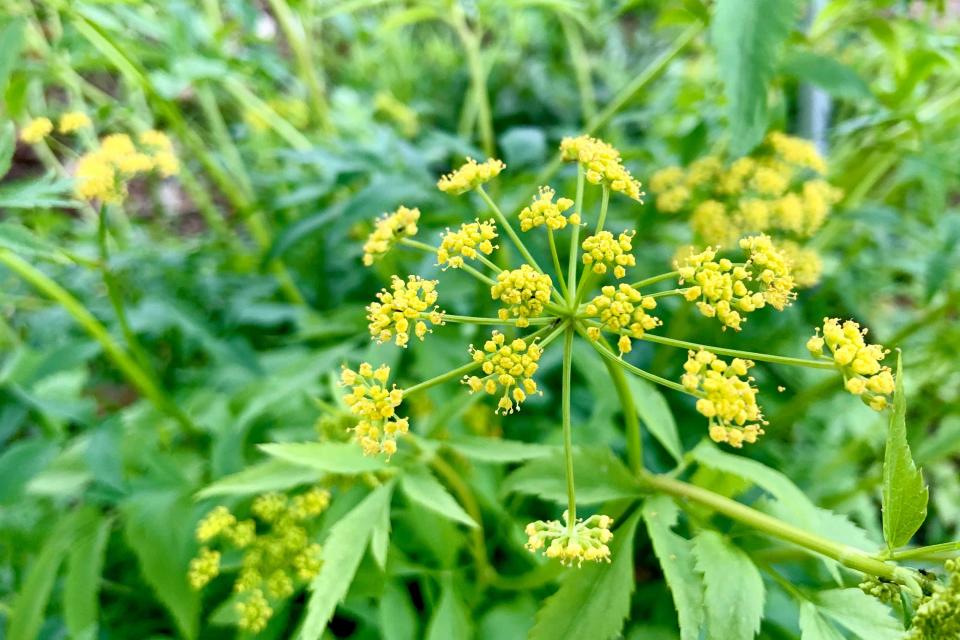
bgwalker / Getty Images
Golden alexander is a tough native perennial that lights up the spring garden with its bright yellow flowers that attract pollinators. Commonly found growing in small colonies in moist prairie soil, in the filtered sunlight of a wet patch of woodland, and in native thickets, golden alexander is a wonderful plant for the home landscape too. Golden alexander has a low-growing, mounding habit. It will spread slowly to form a drift of color and texture, making it an easy-care groundcover.
Where to Plant Golden Alexander
Because this versatile native handles wet soil well, it's a great plant for rain gardens and other wet areas in the landscape such as depressions near downspouts. It's also a good fit for meadows and native gardens, where you can enjoy its spring color and clean foliage throughout the year. Its relaxed habit is a great fit for a cottage garden as well.
How and When to Plant Golden Alexander
Golden alexander can be started from seed or transplants. To start golden alexander from seed, scatter the seed on top of weed-free soil in late fall. Golden alexander seed, like the seed of many native plants, needs an extended cold period (known as stratification) to germinate. Winter will serve as that cold period and seed will germinate in early spring.
Plant golden alexander transplants in early spring as soon as the soil can be worked. Dig a planting hole slightly larger than the plant’s root ball. Plant the golden alexander by backfilling with native soil; no soil amendments or fertilizer is needed. Water the transplants well after planting and water regularly for about a month until established.
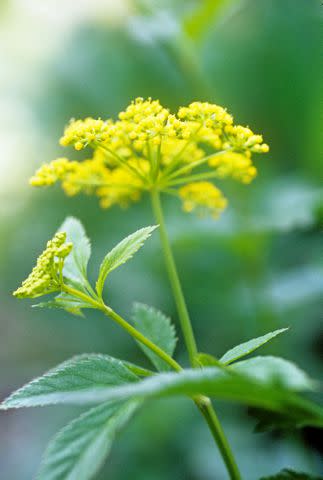
Flowerphotos / Getty Images
Golden Alexander Care Tips
Light
A native prairie plant, golden alexander thrives in full sun—more than 8 hours of direct sunlight a day. However, it will also grow in areas that are partially shaded if it receives long periods of direct sunlight.
Soil and Water
The best soil for golden alexander is moist without standing water. It will grow in loam, clay, and soil that is high in organic matter but will struggle in dry, sandy soil.
Moist soil and regular watering are essential for the first few weeks after planting transplants to ensure the new plant establishes a strong root system. Golden alexander started from seed in the landscape also benefits from moist soil conditions when plants are young. Once established, golden alexander will tolerate drier conditions.
Temperature and Humidity
Tolerant of a wide range of temperatures, golden alexander grows well in USDA Hardiness Zones 3-8. It regularly returns in spring after long periods of subzero temperatures and grows through the heat of summer. Humidity doesn’t affect golden alexander.
Fertilizer
Like other native prairie plants, golden alexander doesn’t require fertilizer. It grows best in soil that is naturally fertile. Improve garden soil by mixing a 2-inch-thick layer of compost into the soil annually.
Pests and Problems
There are no notable pests of golden alexander. Golden alexander does have the tendency to be short-lived but its ability to reseed and spread means that it doesn’t disappear from the garden.
If reseeding becomes a problem, simply cut off flower heads shortly after they fade to prevent the plant from creating seeds. If unwanted seedlings do pop up, they are easy to remove when young. Golden alexander does not reseed aggressively.
How to Propagate Golden Alexander
Propagate golden alexander by seed or division. Allow plants to disperse seed naturally in a meadow or native garden. Seed can be collected from plants in midsummer and dispersed by hand in late fall to create a new planting of golden alexander in a specific area.
Golden alexander can also be multiplied by division in early spring. Using a sharp spade, lift the plant's roots out of the ground and divide the entire plant into several sections with at least a few stems and accompanying roots. Replant the divisions and water well.
Golden Alexander Companion Plants
Plant golden alexander with other easy-care native plants for a garden that will attract and support pollinators. Some good choices include columbine, false indigo, and sedges.
Columbine
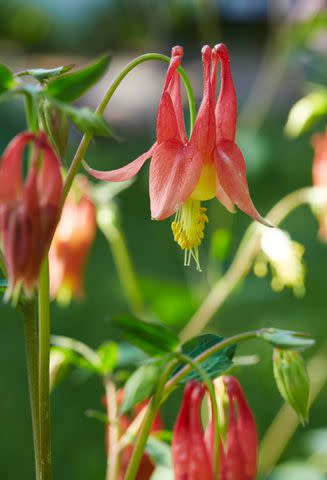
Native columbine (Aquilegia canadensis) produces nodding, bell-shaped. yellow and red flowers in spring that attract hummingbirds. It can reach 2 or 3 feet tall in bloom. Plant this perennial in part shade in Zones 3-8.
False Indigo
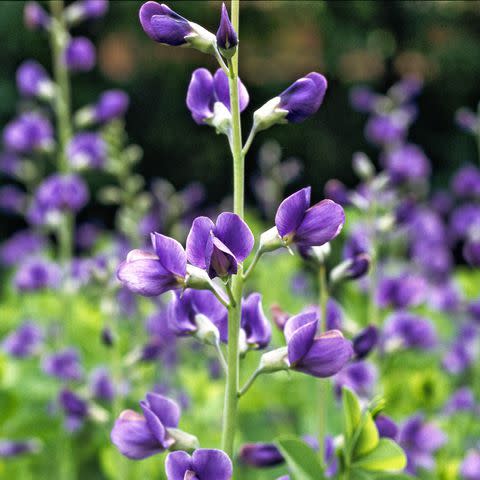
Wands of bluish purple, pea-like flowers appear in late spring on false indigo (Baptisia australis). This tough native perennial grows about 4 feet tall and wide in full sun to part shade. Zones 3-9.
Palm Sedge
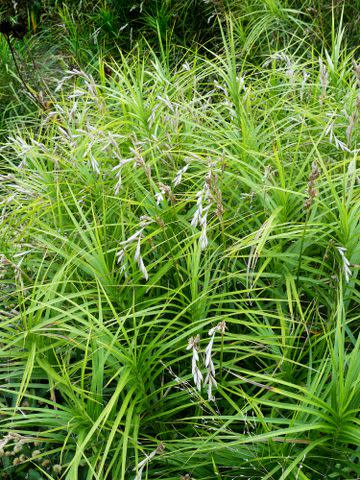
Denny Schrock
Native to western North America, palm sedge (Carex muskingumensis) forms dense clumps of green, strappy leaves that resemble miniature palm tree fronds. It grow 2-3 feet tall in full sun to part shade. This sedge does best with plenty of water, and will even grow in shallow water, but will tolerate drought. Zones 4-9
Frequently Asked Questions
Will golden alexander grow well in shade?
Golden alexander will grow in shade but the stems will be weak and the plant will have few, if any, flowers. It thrives in at least 6 hours of direct sunlight a day.
Which pollinators will golden alexander attract?
Golden alexander is a host plant for black swallowtail and Ozark swallowtail butterflies. These insects lay eggs on the plant and the caterpillars use it as a food source. Dill and parsley are also great host plants for these butterflies.
Where can I find golden alexander to buy?
Look for this North American native at garden centers that specialize in native plants. There are also several online native plant sources. You will find golden alexander sold as seeds or transplants.
For more Better Homes & Gardens news, make sure to sign up for our newsletter!
Read the original article on Better Homes & Gardens.

